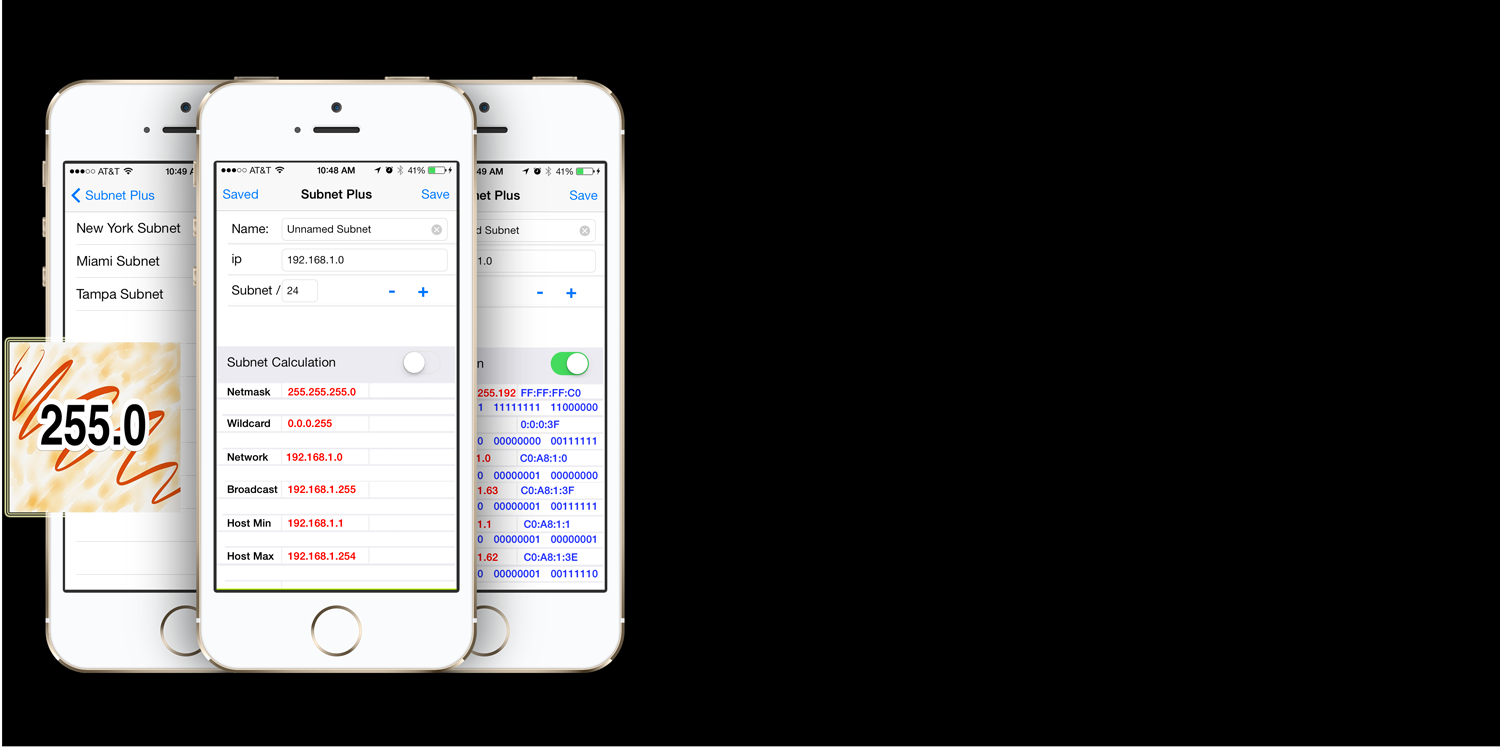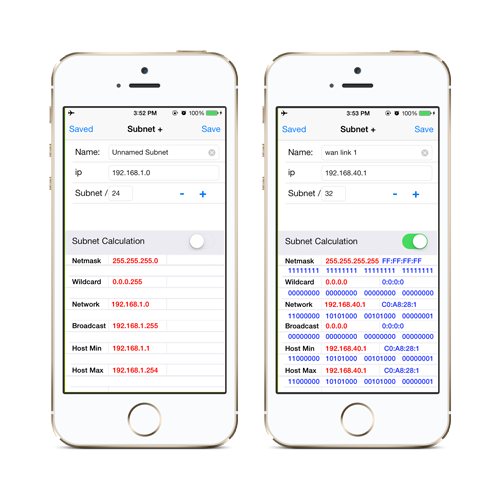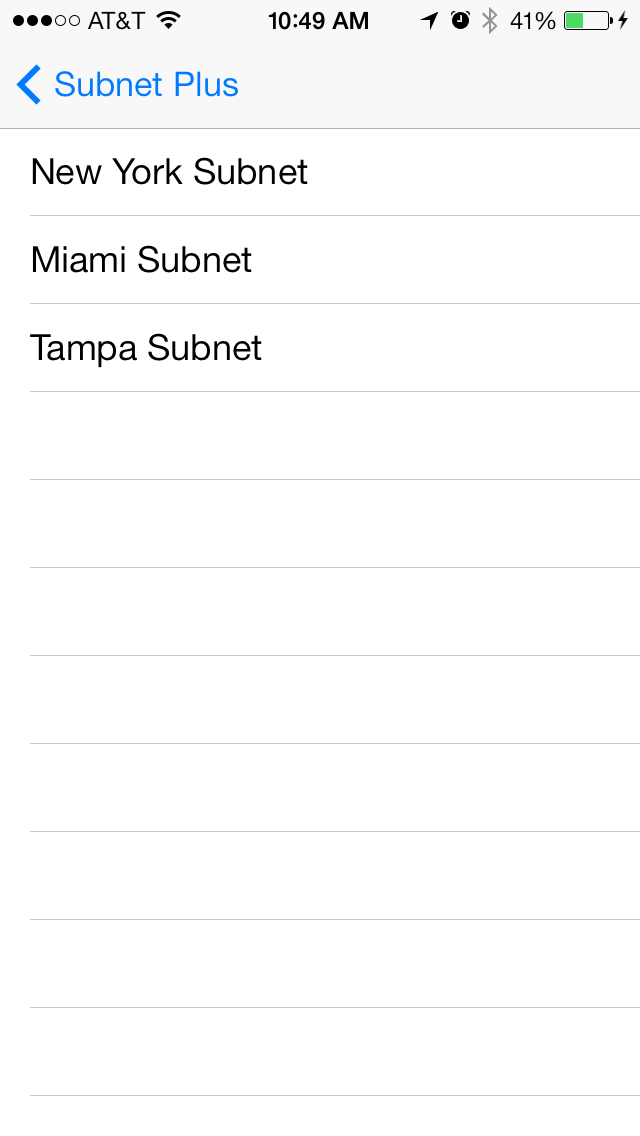©Ted Trentler. All Rights Reserved.

Subnet Plus
Subnet Plus for iOS Is a free Subnet Calculator for the Network Professional on the go.
Available since iOS 8, and currently supported on iOS 14 this IPv4 subnet calculator allows for the input of an IP address and subnet. It returns the number of hosts, subnet mask, wildcard mask,in dotted decimal format, binary and hex. For now the calculator is FREE! Give it a try. As we add functionality we will start charging for it.
The iPhone Subnet Calculator
The Subnet Calculator
Subnet Plus iPhone application Is a free Subnet Calculator for the Network Professional on the go.
Updated for iOS 9, this IPv4 subnet calculator allows for the input of an IP address and subnet. It returns the number of hosts, subnet mask, wildcard mask,in dotted decimal format, binary and hex. For now the calculator is FREE! Give it a try. As we add functionality we will start charging for it.
Discover the App Play demo video
Save Your Subnets
Save your subnet calculations into the built in database for easy reference later.
What is a Subnet Calculator?
Why it is the tool all the cool Network Engineers use.
What is a Subnet Calculator? Well for most Internet users it is of no use. So if you don’t know what a subnet is this is probably not the Calculator for you. If you have an idea of what a subnet is then maybe this is for you.
An IPv4 Internet address is a set of numbers written in dotted decimal format like 192.168.10.1. IPv4 Internet addressees are actually a 32bit Integers. The address is divided into two parts, the network number and the host number. The net mask is used to show the Network number. In the old days there where only three net masks 255.0.0.0 255.255.0.0 and 255.255.255.0 for A,B and C class networks. With the increasing number of hosts on the Internet a more effective scheme is used called Classless Inter-Domain Routing (CIDR). With CIDR you decide how many bits are being used for the network part. A old Class C address (255.255.255.0) is in CIDR notation /24 (i.e. the first 24 bits of the address is used for the network number)
So, what the Subnet Plus subnet calculator helps you do is divide a large network into smaller networks to give you more efficient use of IP addresses.
For example For example a address or 192.168.10.0 /24 has a subnet mask of 255.255.255.0. That subnet gives us 254 possible host addresses. The same address 192.168.10.0 with a /31 or subnetmask of 255.255.254 gives us a network of just 2 hosts.
Hopefully this will give you a general idea of how subnetting functions.



